It was just one of those evenings when you randomly browse the internet, stumbling into the most unexpected of things. I had to do a double take at the thing that popped on my screen:
It was presented without any caption or credit. At first I wondered if this is even real, or if this landscape was just a figment of imagination of a skilled CGI artist. After a bit more searching, turned out this is real, and this is right here in Canada, Auyuittuq National Park. Just 3 short flights north, a week of hiking and pretty much anyone can go see it.
Of course, having never hiked for multiple days in the arctic, I figured it might make sense to start with something a little bit smaller. It would also be great if I didn’t have to demolish my entire bank account to do that, considering that the flights alone would be almost $4000 per person, taking me from Toronto to Ottawa, to Iqaluit (Nunavut’s capital), and on to Pangnirtung, the closest airport to the national park. Except apparently, one can book Ottawa to Iqaluit using Aeroplan for mere 15,000 points, and the full itinerary for 25,000.
Reward seats are limited, but after a few attempts, I ended up with a pair of round trip tickets to Iqaluit scheduled for September. It was March, and we had just about enough time to figure out what gear we might need to survive in the arctic for a few days. At check in my bag tipped the scales at 31 lbs, not too bad for carrying enough supplies to last 4 days on the tundra at 0 ºC.
The airport in Iqaluit is small but busy. Although heading south it connects only to Ottawa and Montreal, heading north it acts as a gateway to all the other arctic communities. There are no roads between them, it’s either air or sea. Adventurous souls sometimes head out on snowmobiles in the winter, but it’s not how they get supplies across.
The streets of Iqaluit are grey with dirt, as only the major roads are paved, and the sidewalks are essentially just wide gravel shoulders. We end up on the far end of town in a cute B&B right on the Frobisher bay. It’s low tide and things look a bit strange. The sun is shining and after leaving our bags behind and putting on more layers, we head out to explore the town.
Notably, the stop signs are multilingual. In addition to English and French they feature Inuktitut, written in syllabics. The same is found on shop displays and other signs, although French is generally omitted.
There are two supermarkets in town, and a lot of the familiar things are there. Veggies, milk, eggs, meats, avocados, Laughing Cow cheese. Considering the expense of getting things up here, bulkier items are priced disproportionately higher. The eggs cost pretty much the same as in downtown Toronto, but toilet paper is about 2-3x costlier. What are the implications of that?
We make a pit stop at the local shawarma joint, and then head back to our house by the bay. Instead of taking the streets, we walk along the beach, spotting a couple of dead seals, lots of boats, and everything else including a kitchen sink.
For a more scenic option, we take the Apex trail, which starts near the cemetery and heads all the way to Apex, a sort of suburb of Iqaluit. It is a favourite route for Iqaluit’s dog walkers, and provides the easiest way to understand what tundra near Iqaluit looks like. There are no tall mountains here, but there are hills. It’s a base of granite rock, with a skinny layer of soil in patches, covered by stubby vegetation in a variety of colours and amazing water views. That’s basically the long and the short of it. And it’s actually surprisingly beautiful.
The following day we do more sightseeing, visit a Tim Hortons, pick up some extra supplies for the hiking portion of our trip – keep ourselves entertained.
For such a small town, the Tim Hortons location is very busy. Most people there are Inuit, and some are wearing fairly traditional clothing. Most notable is the amauti, which perhaps is still the most practical way of carrying around a baby in the arctic, despite whatever contraptions people down south come up with.
Something we have serious trouble with is getting bear bangers and bear spray. I had several leads of possibly helpful people, but most are missing in action somewhere, possibly digging clams in the bay during the low tide. One place that seems to be more consistently staffed is the Department of Environment. The folks there listened to our planned route, made no negative comments about it, and gave us a SPOT tracker for emergency use. After much searching we manage to rent the bear items from an outfitter in Apex, but even a local store clerk was willing to lend us hers. People here are friendly, and try to help, as long as you can actually get hold of them.
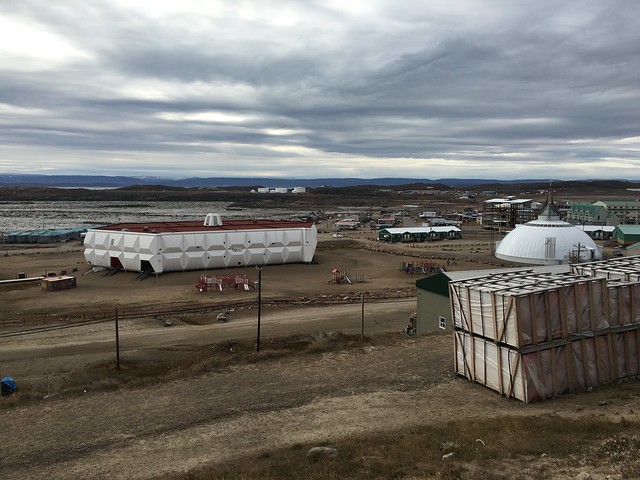
View of Iqaluit and the bay from Astro Hill. The structure in the middle is a high school. Yes, it is a box filled with kids, which are actually very numerous in Iqaluit.
After chatting with other guests at the B&B we find out that the northern lights typically come out to play around 9-10 pm, rather than midnight, as I was expecting. I check the aurora forecast, and they promise activity level 5, which is High. Armed with that information, we come out onto the patio at 9 pm and sure enough, there are lights dancing in the sky. I can go home happy now.
It’s day 1 of our hike, and the weather is more than promising. It’s been warmer and sunnier than I hoped. We finish stuffing our bags with all the dried arctic char we got for snacking, take a quick run to Apex to pick up bear bangers and take a 10 minute taxi ride to Sylvia Grinnell Territorial Park.

Instead of sea foam, the shore near Apex is covered in pieces of ice. I don’t quite dip my toes into what is essentially Arctic ocean, but touch it with my hands.
Sylvia Grinnell is also the name of a sizeable river that flows into Frobisher bay near Iqaluit. Our plan is to hike north along this river, which should make path finding easier. There is no bridge across, so without a boat one has to stick to the east shore of the river, which is quite alright. It takes about 40 minutes to get out of the territorial park and into the nameless tundra. It’s a bit of a cottage country up there, with some offroad tracks, cabins, and the occasional shotgun shells here and there. But mostly just the river, the rocks, and the lush vegetation.
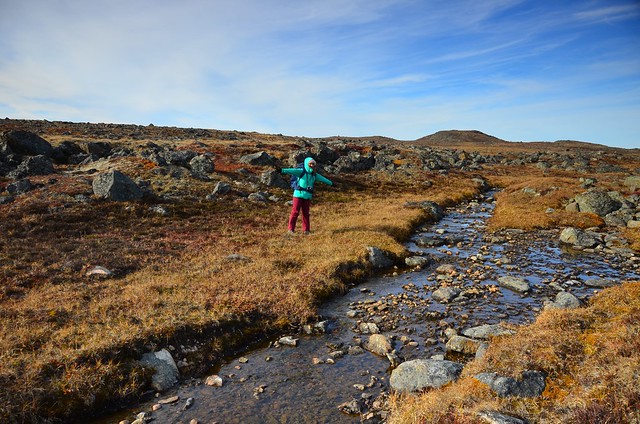
Although there is no way we can cross Sylvia Grinnell river, we have to cross a number of small streams.
Sunset is scheduled for 6 pm, so at 4 pm we start picking a campsite. It’s a pretty windy stretch of the shore, and even after locating a somewhat covered spot among the rock cliffs, the wind is threatening to turn our tent into a sailboat. Thankfully, there are plenty of boulders around to tie it down to. The only downside is that the sky turned cloudy and that rules out aurora sightings. At night the wind keeps flapping around making noise. I wonder if a bear will quietly sneak around. I was told they like to check things out and go their way. At the end of summer they should not be hungry, having feasted on arctic char and berries. I wake up a few times during the night, but don’t detect any bears.
The next morning is calm but gloomy. The sky is grey with clouds, and it almost begins to rain.
We eat oatmeal sitting in the tent, protected from the wind, with just the feet sticking out. I can see the river and the opposite shore. The valley is very wide in this section. The rapids of the river are loud and provide a fitting background to the overall open landscape.
We manage to pack everything back before it starts to rain. We line the insides of our packs with large garbage bags to protect the contents from getting wet. On go the rain pants, and we head out further north.
The easier parts of the hike end and we have to scramble around huge boulders to continue. It requires just a bit more care to do that while balancing the backpack. Lean too far forward and it starts pulling you further. On the other side of the scramble the river valley gets narrow and secluded. We decide to make a tea break in this gorgeous spot. We sit right on the ground – the plants of the tundra are soft and comfortable.
I hide behind a particularly large boulder to respond to the call of nature, and observe a white plastic holder used to hold rifle rounds. Alex’s scouting efforts result in finding a rather elaborate BBQ setup. This looks like someone’s favourite campsite for hunting trips. He marks the spot on the GPS and we keep going.
It starts to rain slightly, but the wind keeps blowing from the south and it only gets our backs and packs wet. Oddly enough, my mood, generally negatively affected by cloudy rainy weather, is still upbeat. The vegetation around us is short, but thick and colourful. With each step it sags considerably under my feet, like a plush, luxurious carpet. I want to shed the backpack and roll around on it like a cat.
We cross a few creeks, and keep walking on. The target is to hike about 10 km in one direction today, then turn around and walk back until camp. Perhaps in that quiet spot with a BBQ. It’s not too ambitious, and if we didn’t have to stop so often to take photos we’d be done with it a lot sooner.
The rain gets stronger and we come to a particularly picturesque spot. The river curves in an S-shape, and our path takes us to a tall ridge with a view of the valley stretching far in both directions. This is it! I get a sense that it won’t get much better than this today. We leave our backpacks away from the edge and hike further, to the tallest point in the ridge that we can see. Savouring the moment, we are beginning to get wetter. I’m pretty sure Alex’s DSLR will hate him for it, but it’s at a point in its life where permanent water damage would be too easy of a way out. I mark the spot on my phone’s GPS. 63º 52′ 9″ N, 68º 38′ 40″ W. This will be my northern boundary, for now.
We hike back, with the rain stopping occasionally, and sometimes starting again. We have already hiked this way, but somehow things look just a little different facing the opposite direction.
We end up back at the hunters’ campsite and pitch our tent. The air is still and remarkably easy to handle. There is a smell of something we aren’t used to. Maybe it’s the plants, releasing their spores or pollens as we step on them. The river is a short and easy walk away. I fill up with fresh water and make dinner: ramen noodles with dried arctic char. They pair rather well. Soon after we climb into the tent and stay awake for several hours, talking while it’s still light outside. With the sun behind the clouds, it’s cold to stay out, so it makes sense to hide inside a warm sleeping bag. At the same time, it’s early enough that sleep is not on our minds yet. The day was so long, and I’m happy that it seems we both still have plenty of reserves to keep going.
This time there is barely any wind flapping the rainfly of the tent. As I wake up I hear the rain drops hitting it instead. I have objectively nowhere to rush and just keep lying there, toasty inside my sleeping bag, listening to the rain. So few things seem important enough to think about when you’re out like that. We have enough food, warm clothes, easy access to clean water, comfortable boots and good company. What more does a human need?
After a leisurely breakfast we pack our things and set out for the last stretch of the hike. The rain doesn’t really stop, but I’m more concerned about finding an optimal path around a wall of rounded boulders. We try to go parallel to the river, close to the water, but eventually admit that we have to go ahead and climb up to reach the plateau above. The rocks are covered in lichen and not too slippery, but with the rain, you still lose footing every now and then.
At the top is a friendly meadow, with vibrant red plants firmly gripping the granite rock base. I’m tired of climbing up and the desire to roll on the soft tundra is too much to resist.
The river makes a couple of bends in this region, and during the first half of the hike we followed its path more closely. Now we decide to take a shortcut, a straight line that would pass through a previously unseen section of the tundra and eventually come back to the river. I’m still surprised how little the rain bothers me. We grab a snack, partially to keep the energy levels up, partially to keep the mind occupied. I realize that I’m not exactly hungry, but decide to eat that fruit bar anyway, as a pre-emptive strike. That Sneakers ad is right, you are not you when you’re hungry, don’t ask me how I know.
The new path we follow resembles a sort of trail, but at times I have to think a little longer to decide which way to go. We end up in a small boggy valley between moderately tall granite hills. Small streams flow down the eastern hill (the one further from the main river) and turn the bottom of this valley into a lake. Alex gets concerned that the water might get too deep and the mud might start sucking us in. Unfazed, I hop from one high spot to the next, then carefully around the edge of this tiny lake, and finally come out onto more solid ground. I don’t know if this valley connects back into Sylvia Grinnell river, but it seems to be going in the right direction, and we still have plenty of time even if we have to back track a bit. The valley is quiet and the rain is light.
The western edge of the valley evens out to a less imposing height, and I start considering if we should go up that edge to get a better look at things. It’s been a while since I’ve been able to see the river, and I’m starting to miss it. I make mental notes of promising spots to climb as I pass them, but continue straight. Finally, the path in front of us turns in a steep scramble of large rocks. They have broken off the eastern slope a long while back, already eroded and covered in lichen. Still, it makes me realize that as solid and permanent as these giant hills look, they too change, and eventually, they will be gone. The rocks are big enough that one would have to jump to get down, and I don’t feel like the effort is worth it.
We turn back to the nearest exit – a gentle slope that places us on a ridge overlooking the river. A sense of relief comes over me: there it is, the river. Still there. It has been our guide for the past 3 days, and we have already developed a certain spiritual connection with it. No wonder people who hunt, fish and rely so much more on the land attach special meanings to rivers and mountains. It takes no time at all to develop that bond.
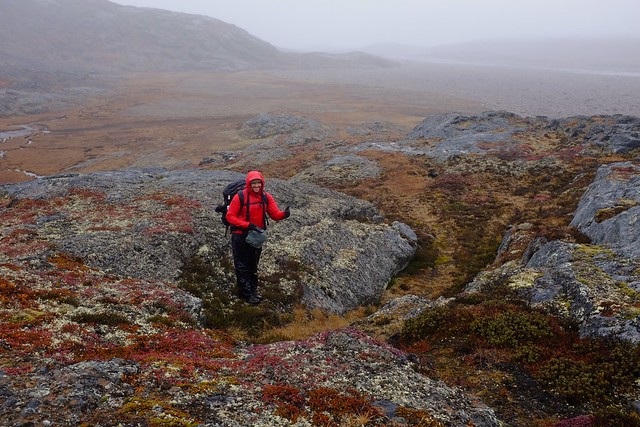
Happiness is seeing a thin stretch of water through the haze of the unrepentant rain. There, on the far right.
The ridge is exposed and we get hit with stronger wind and rain. Our boots, pants and jackets are all waterproof, but the gloves are not, and they are pretty much soaked. If I stop, it starts to feel cold, so I just keep walking, barely thinking about where to place my feet. Soon we’re back in the cottage country, and muddy ATV tracks appear among the vegetation. Where did all this mud come from? It was so nice and clean last time we were here. I slide occasionally, but don’t quite pay attention to it. Alex is making fun of my fur hat, saying that it looks like a sad wet animal. We approach another bend in the river and he proposes to take another shortcut. Sure, why not.
With the rain blowing in my face, I don’t feel like stopping to smell the flowers and take in the views. I am aware of everything around me on some level, but it’s a pretty low level. On the high level I’m in an almost trans-like state, just focusing on moving forward. Next time I should really get waterproof gloves. The backpack feels heavier now, which makes no sense at all, because it’s missing 3 days worth of food.
The clouds are very low in the sky, and while we occasionally hear the airplanes, we cannot see them. That is until we get close enough to actually see the airport, and how they come for landing. Eventually we start seeing the edge of the Sylvia Grinnell Territorial Park, signified by the big white tents perched up on a clearing. This is where we will stay tonight.
Aside from the airport, there are now more signs of civilization. We pass a crew of road workers fixing up a bridge across a small creek, right on the edge of the park. They say hello, but don’t really dwell on our presence. I keep going, aiming for the nearest white tent. They are the size of small cabins, not like our cozy little packable tent.
The first one we enter is a bit on the creepy side. There is tons of stuff thrown around it – blankets, clothes, food, toys. It’s as if someone just left it and will return shortly. I examine the thick layer of mould on some of the food and realize that no one is coming back to finish it. I’d make a joke about them going off and getting eaten by a bear, but that wouldn’t be funny.
We try another tent. Someone left their rain pants there, but otherwise it does not look weird at all. There is a collection of different lighters and matches by the diesel stove. It’s important to have a way to start a fire here, isn’t it? I ponder the diesel stove and realize its exhaust has been disassembled. The trusty alcohol stove gets unpacked instead, and we get ready for another serving of oatmeal with raisins. The only other hot food we could make is Uncle Ben’s rice, but apparently, that stuff is rather disgusting. That’s what you get for trying new things: the experience of knowing what does not work.
As Alex unpacks our sleeping bags and I watch the blue flame of the stove, the cold is getting to us. There is no wind in the tent, but it’s still a rather large and airy space, and without motion the chill becomes ever more pronounced. Our soaked gloves and other items are spread out to dry, although I doubt that will actually happen. After polishing off the oatmeal and a few pieces of chocolate, we get into our sleeping bags, desperately trying to warm up. It feels so much colder than any time before. It feels like a switch got turned off and all the energy I had that made me move forward and enjoy the day has been cut off completely. A headache takes over all my attention, I crawl out of the sleeping bag to get some ibuprofen, sharing it with Alex, who apparently feels a bit under the weather as well. A plane loudly takes off at the airport – the runway is just a few hundred meters away. The whole thing feels so surreal. I try my best to dose off, but it’s hard because we made it to this place before 3 pm. This is way too early for bedtime, but there is nothing else I could do. The rain continues outside. The sleeping bag begins to warm up. I notice that I am no longer concerned about bears.
The next morning begins with a hike, oddly enough. The nearest outhouse is about 5-10 min walk away (you don’t think I actually timed it, did you?), and since we’re back in civilization now, I cannot just hide behind a bush. There are no bushes in the tundra. If a plane passes by, that’s at least 100 witnesses right there. So I head out into the overcast morning, thinking about life, universe and everything. The Sylvia Grinnell river, it’s still there. It stopped raining.
When I get back into the tent, we eat the last of the oatmeal and there is an unspoken question in the air. What do we do now? We planned to spend 4 days hiking and camping on the tundra, but we’re essentially back in town after only 3. We booked a room in the bayside B&B for the next night, not the upcoming one. I don’t want to sound like a wimp so I don’t say anything. I let Alex voice what we’re both thinking: let’s turn our phones on, and call about the room for tonight. After a bit of thinking, my iPhone comes back to life and gets me the full 5 bars of signal. The luxuries of civilization.
The manager of the B&B, Noah, informs me that not only will he have a room for us available immediately, he will actually come and pick us up from where we are. Oh, the things that happen when you combine the luxuries of civilization with the kindness of Canadians. Once inside the bayside house, turns out there is no one in there at the moment but us. What a perfect time to finally be able to feel like home and stroll around in your underwear. I take a long hot shower, make some cocoa, and sip it while looking at the Frobisher bay. The luxuries.
While Alex is taking his turn enjoying the hot water (which was probably taken from none other but our old friend, Sylvia Grinnell river), I check out the local dining options. The Big Racks BBQ sounds promising. I call up the Apex outfitter we rented bear bangers from and arrange for them to come pick them up, getting a ride to the BBQ place in the process. We chat about life. I wonder how come a French (Quebecois?) guy is running an outfitting service in Nunavut.
The Big Racks BBQ is a fairly small joint, but I suppose they are big enough for this town. And they offer a low flat rate for delivery. I order a steak and grab their menu in case I get a case of late night munchies.
After this pleasant lunch we make some mental calculations and realize we’ll be here for another 2 days. A visit to a grocery store is in order. They have a 10 lbs bag of potatoes on sale for only 99 cents! I figure even if half of them are spoiled, it’s still a good deal. I love me some potatoes. Turns out they are all perfectly good spuds. Double plus good. We make them for dinner and share it with another guest, a court reporter in town for a week. I suppose she will inherit whatever potatoes we don’t finish in 2 days.
Most of the next day we spend in the house, seeing how food and drinks and gorgeous views are covered. We do make an effort to come out in late afternoon and visit the local museum. There isn’t too much to do in town overall. Entertainment is provided by the fact that a seedy character entered a restricted area and the keeper of the museum calls RCMP on him. Apparently, he is a repeat offender known to have stolen things from the museum in the past. I admire a creepy mixed media piece about a mythical creature, Qalupalik, that sneaks up on unsuspecting fishermen, puts them into a large pocket on its back and takes them away into the sea. Qalupalik is made out of a porous whale bone. I don’t think I have ever seen anything like it.
We finish off the evening at a local fine dining restaurant, where we have some arctic char, this time grilled. The sky clears up somewhat, but the auroras are not as bright as the first time we saw them. Instead of taking up the entire sky, they just hover above the southern horizon, over the bay. I think I’m starting to get a feel for what it would be like to live here. The B&B owner told us that the past winter there were times when temperatures dropped to -70 ºC. Nobody would come out of their houses. All the restaurants that typically deliver food would not pick up their phones. He was reduced to eating whatever scraps he had left, not daring to engage into any resupply missions. A curious duality this town has. On the one hand, it offers quite a variety of services and products, heck, they even sell avocados in the grocery stores and lend aspiring polar explorers SPOT trackers for free. On the other hand, it is quite fragile and deeply affected by things like bad weather spells, or repairs on the airport runway, or sea ice retreating too slowly in the spring.
The court reporter lives not far from Toronto, and gives us a tip as to where to get a good carrot cake in the city. The world is very large, but it’s also very small. All roads lead to Toronto. Foodies of the world unite. Or something like that.
Our last day in Iqaluit is highlighted by a lunchtime conversation with another guest, an Inuk woman who also works with the court, as an interpreter. She tells us a fascinating story about a hunting party and a bear that her brother managed to talk into leaving. Bear language is a thing that exists. We stay as long as we can, listening to more of her stories, but eventually have to go and catch our plane home. We call a cab and give the Frobisher bay one last look.
The cabbie is an Italian guy who makes a lot of ethnic jokes, and announces proudly that he’s had it with the boring life in Iqaluit and is leaving next Monday to live near Montreal. I must admit, if one does not like spending time on the lonely tundra, one will run out of things to do around here pretty quick. We chat about some social issues too, and there is plenty to be bitter about in Nunavut. But that’s a long story.
When our plane lifts off, I spot the white tent in the park, together with the winding river. Realistically, I can’t see myself living here. Yet as I watch the land pass underneath, barren hills criss crossed by multitude of rivers and streams, as well as the open bay in the distance, I feel a strange longing. It’s not even the land itself. It’s how effectively it clears your head of all the unimportant fluff, letting you focus on what you think really matters.
And there is not a whole lot of that, after all.
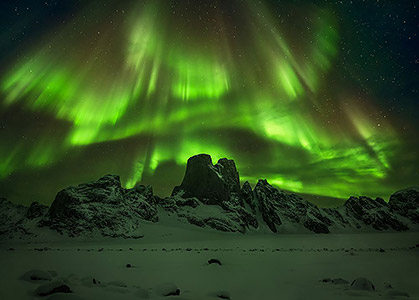

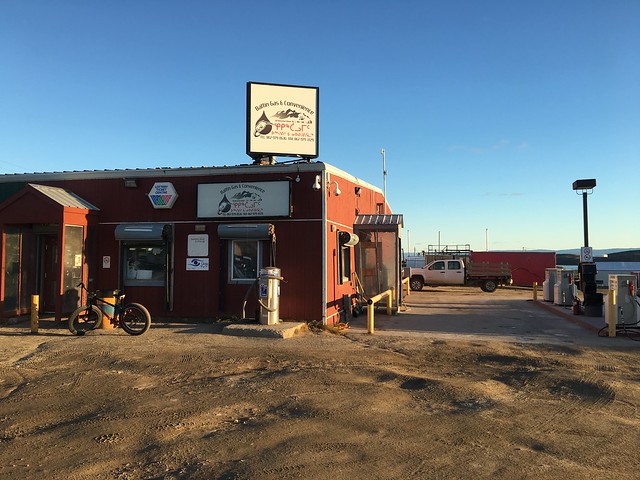


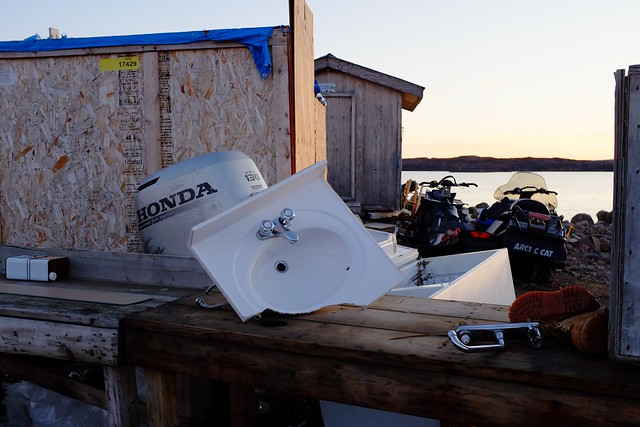
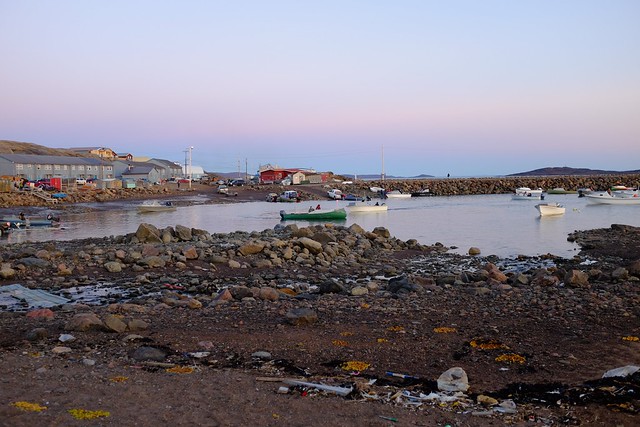
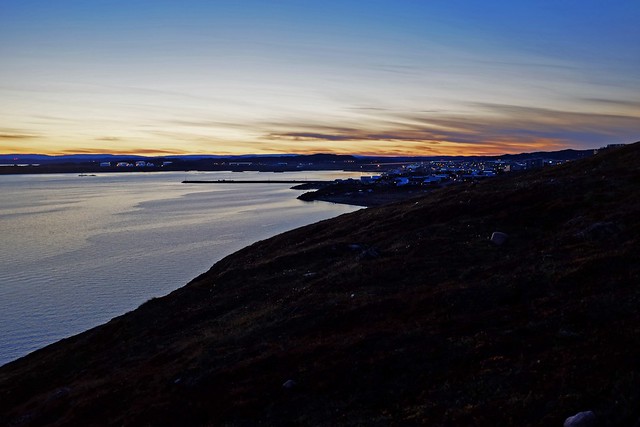
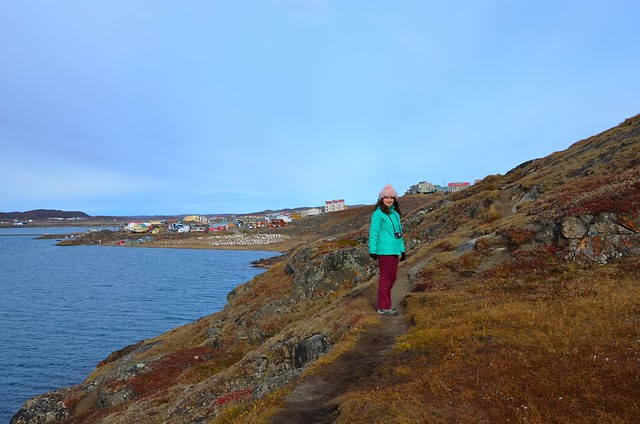
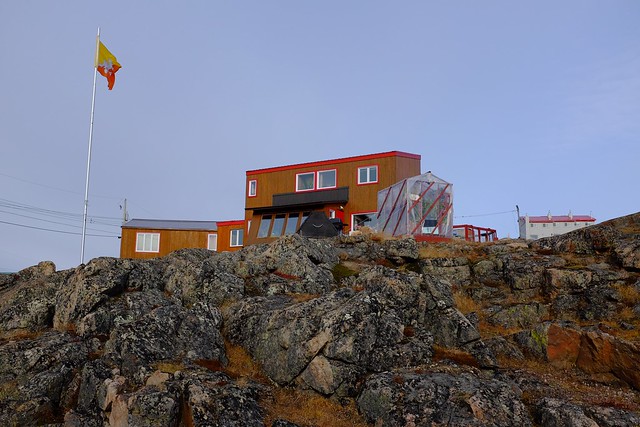
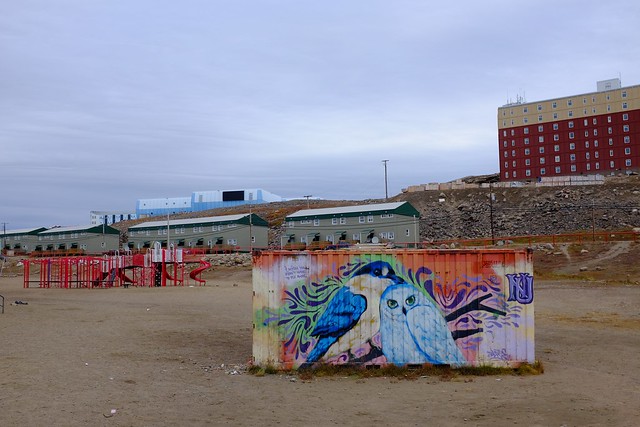

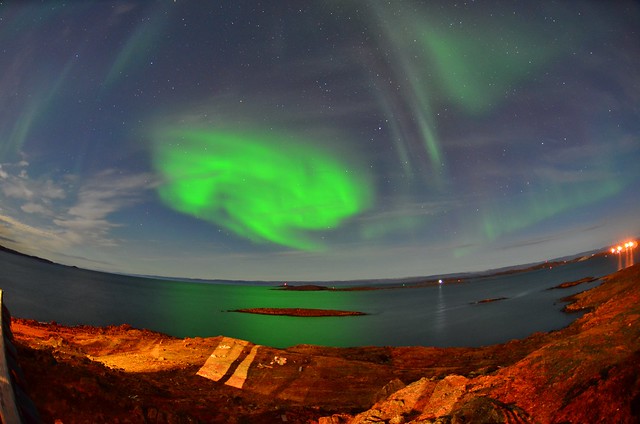
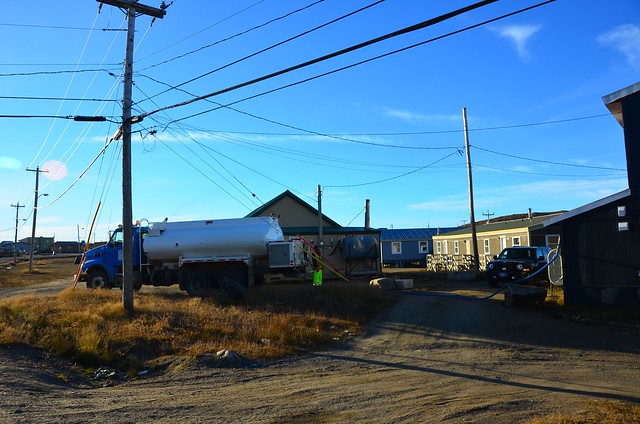
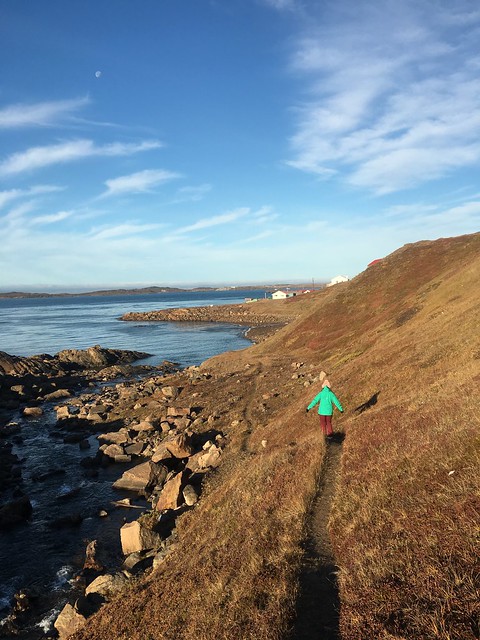
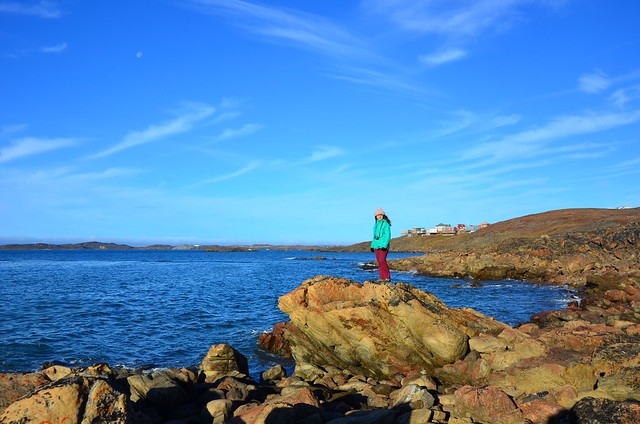
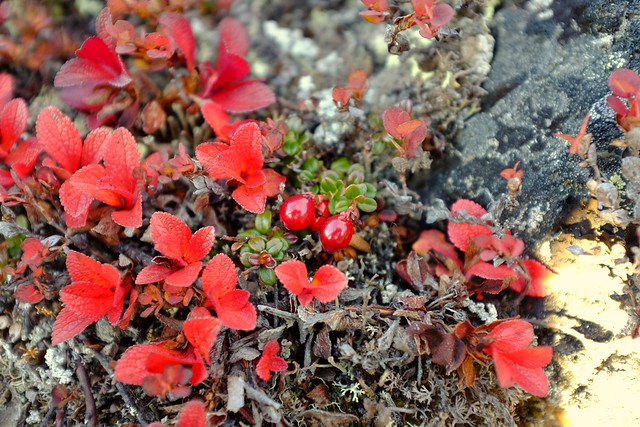
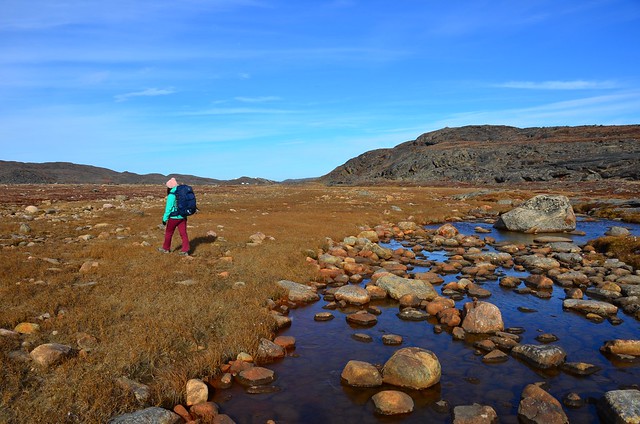
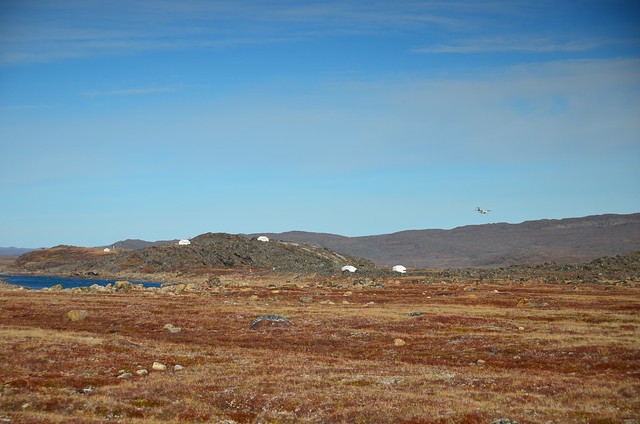
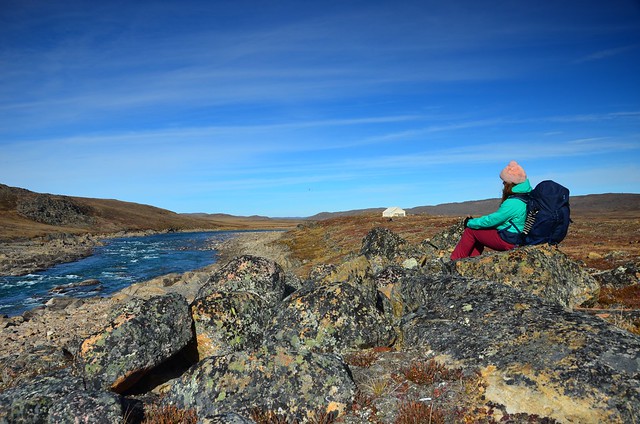
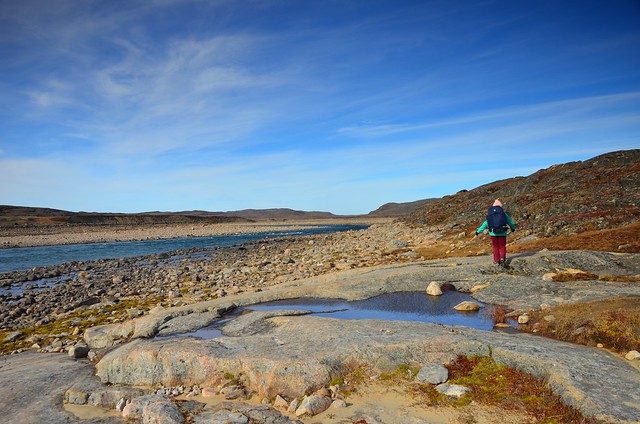
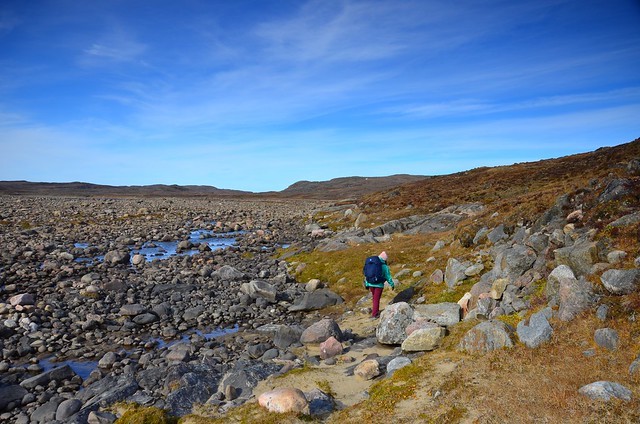
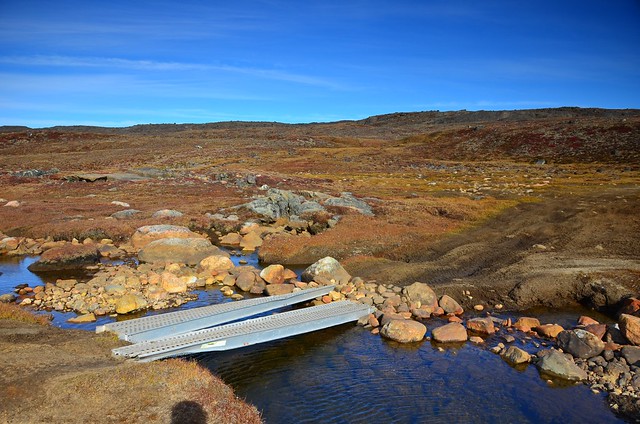
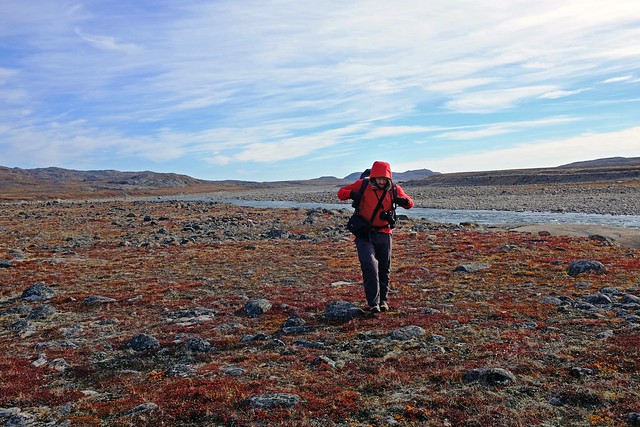
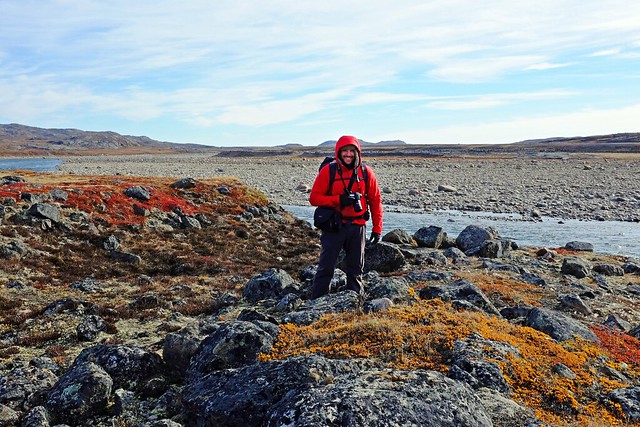
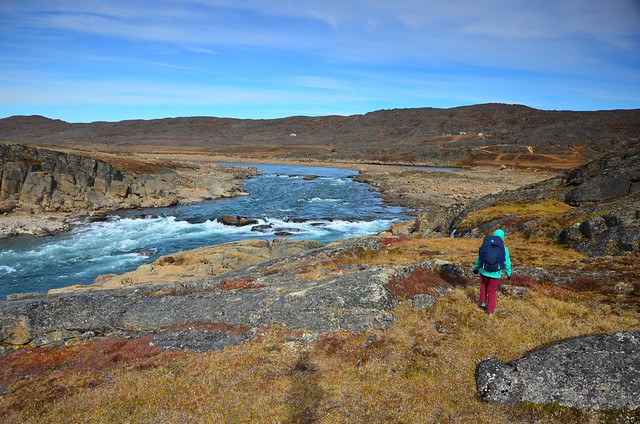
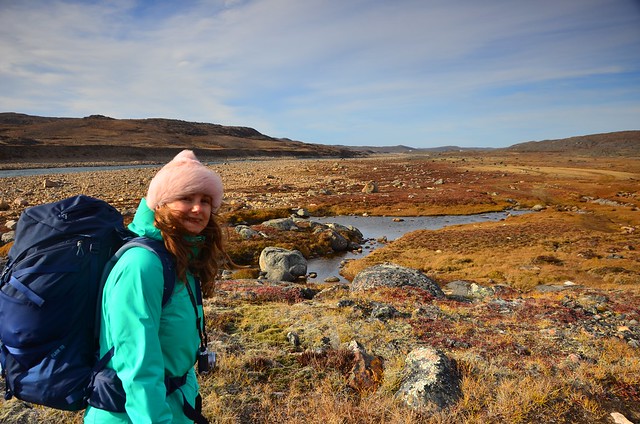
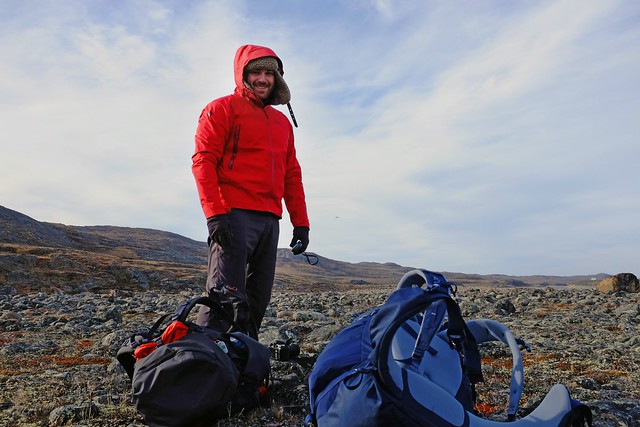

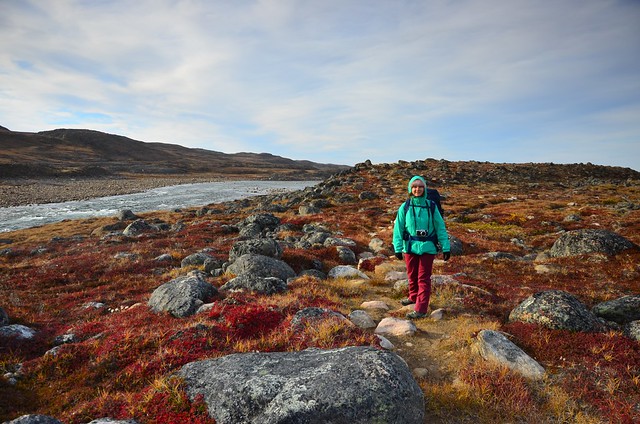
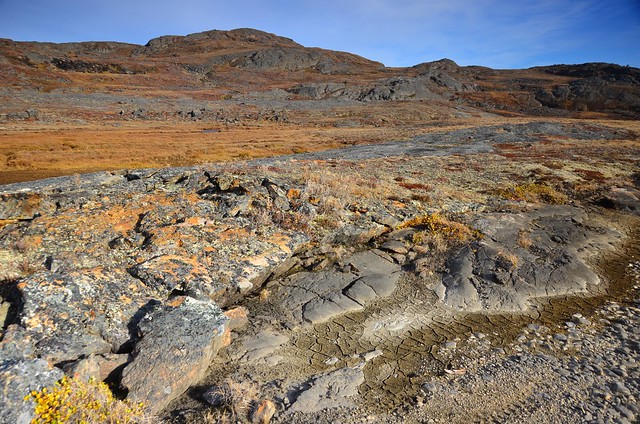
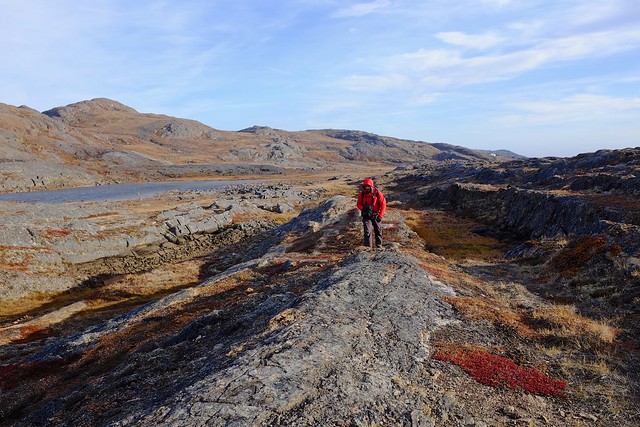
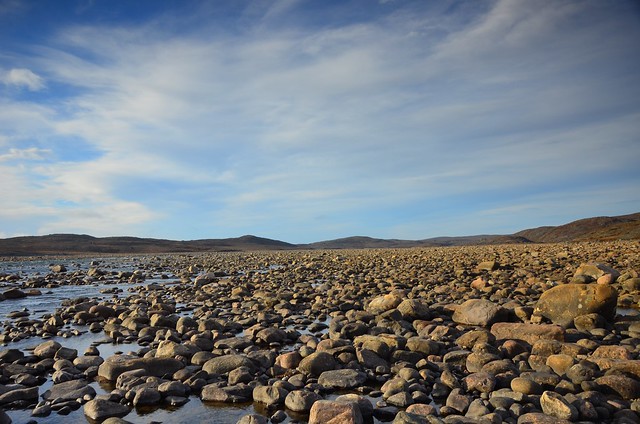
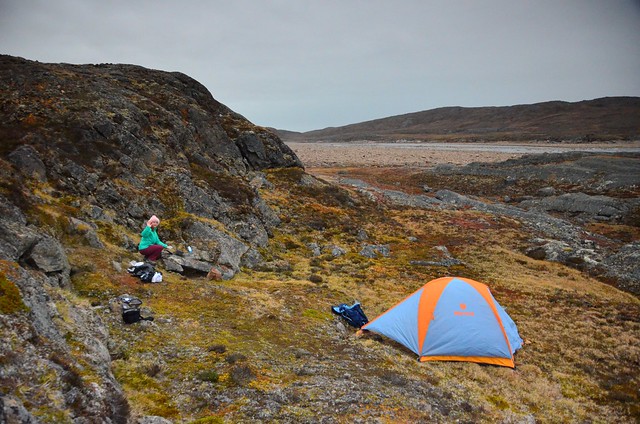
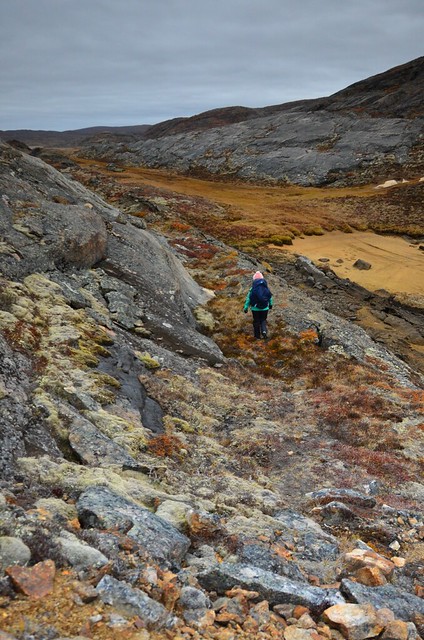

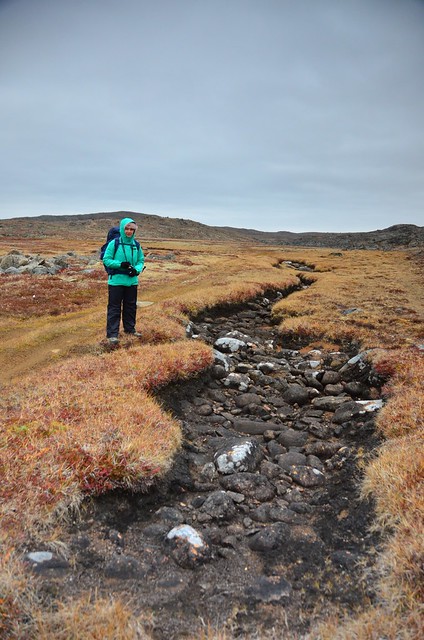

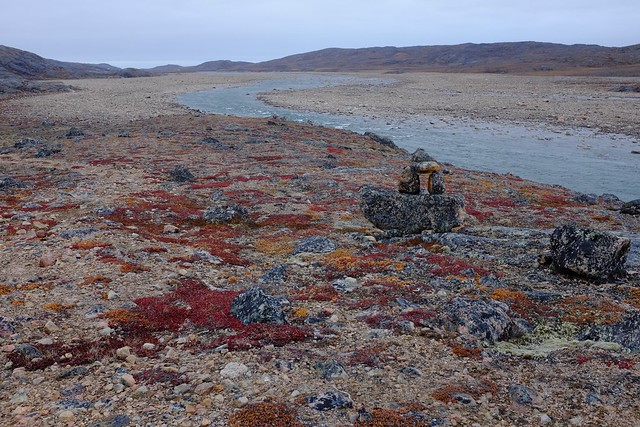

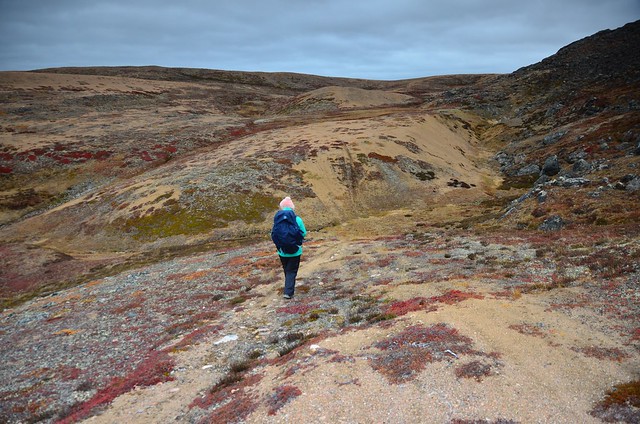
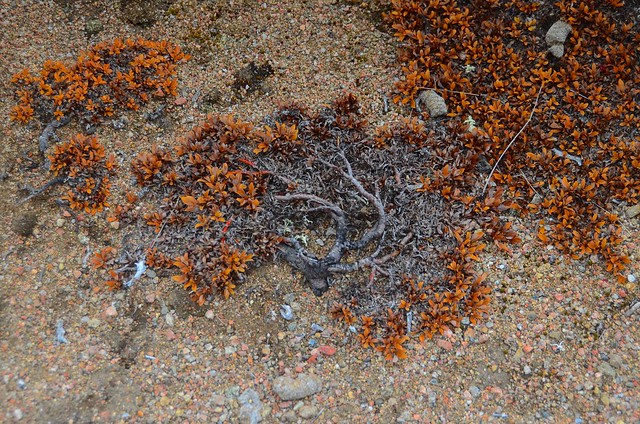
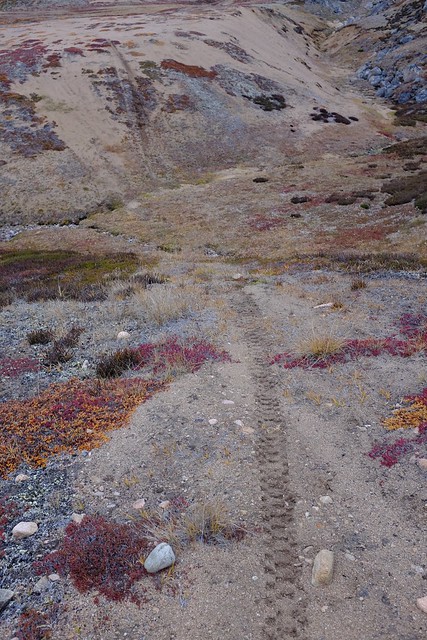

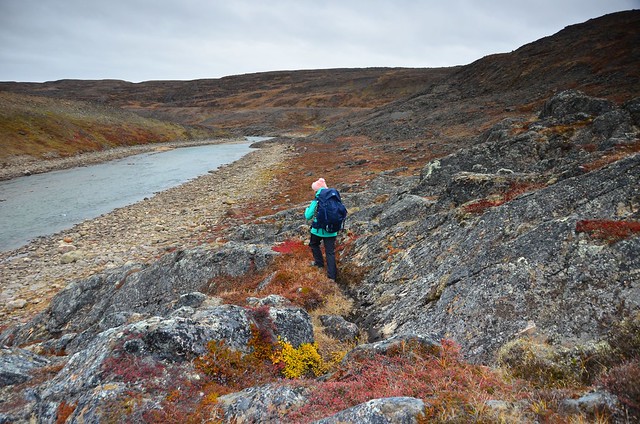

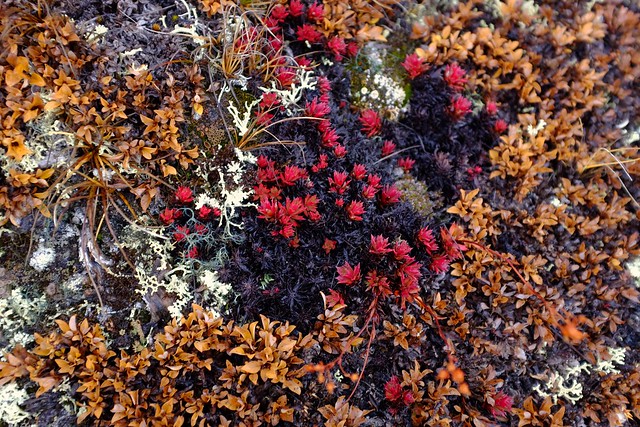
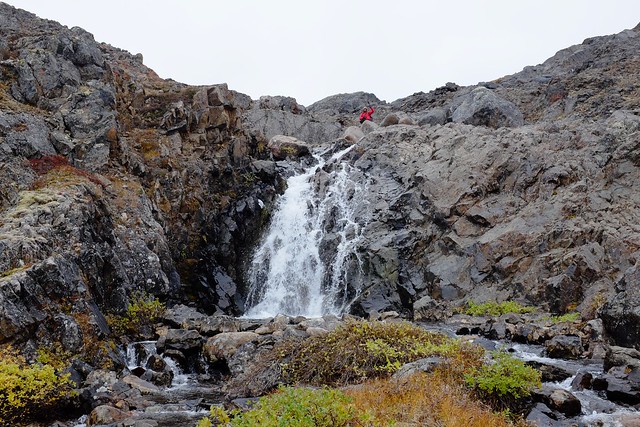

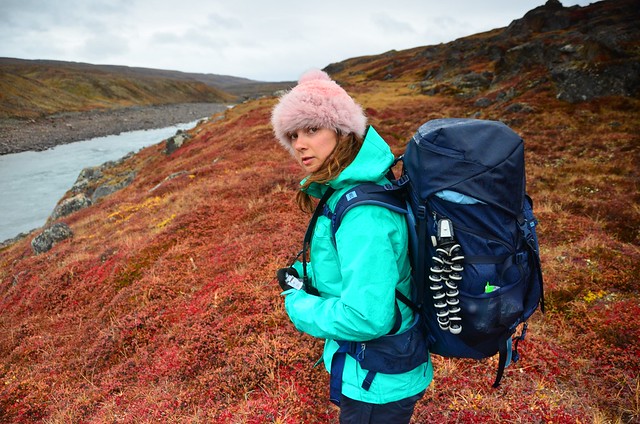
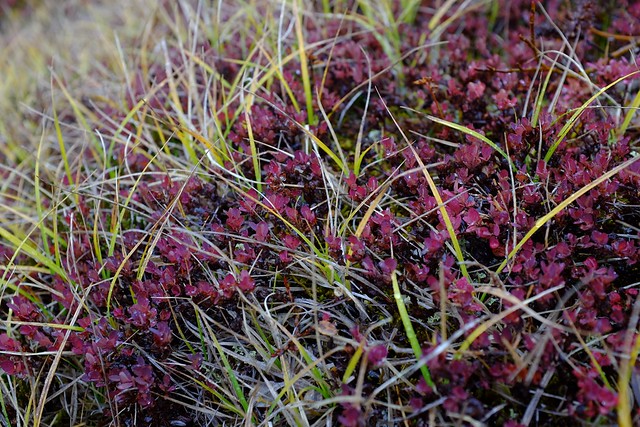
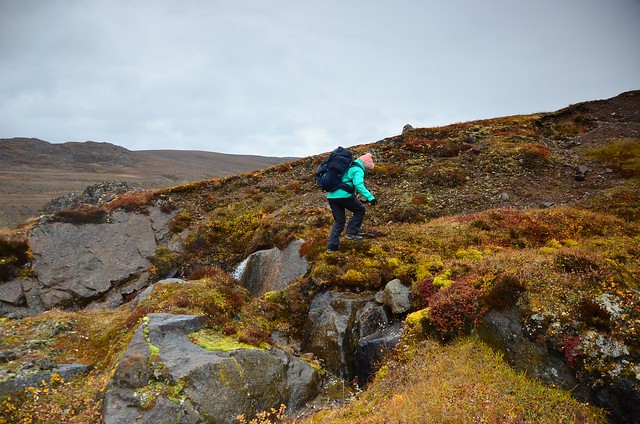
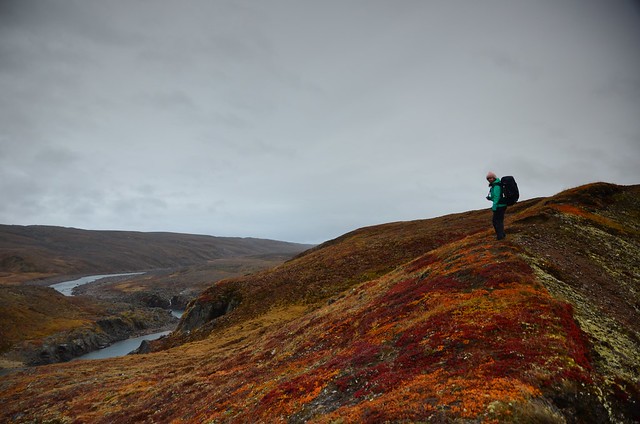
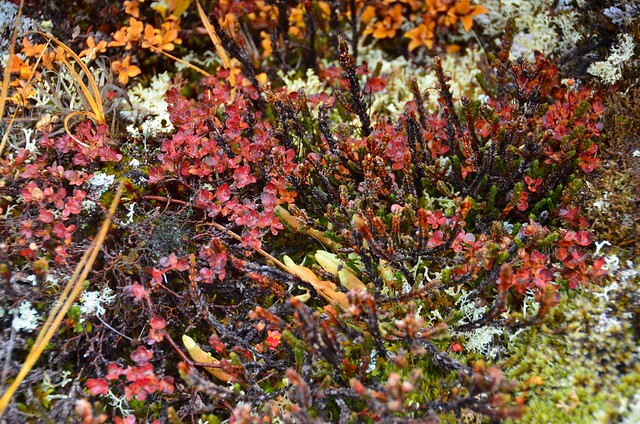
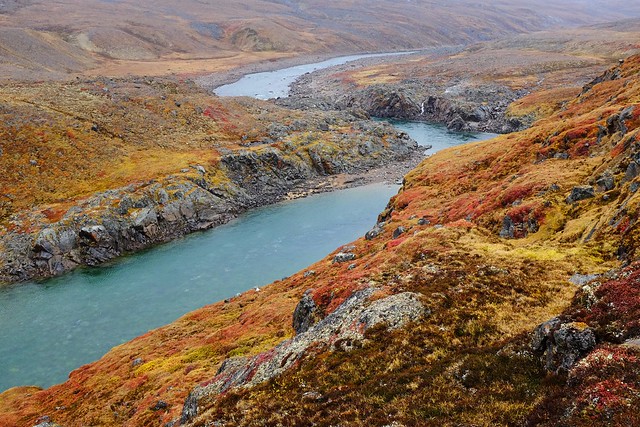

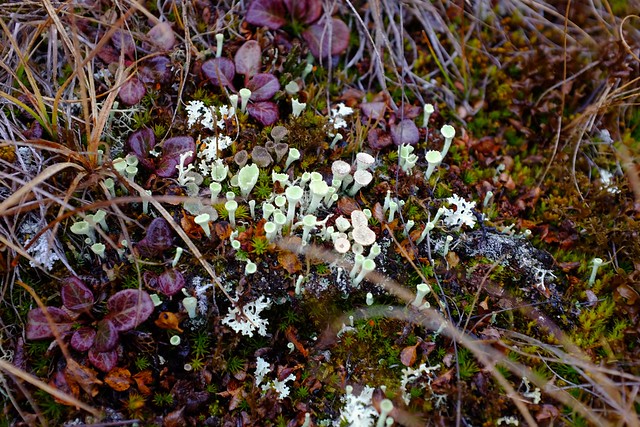
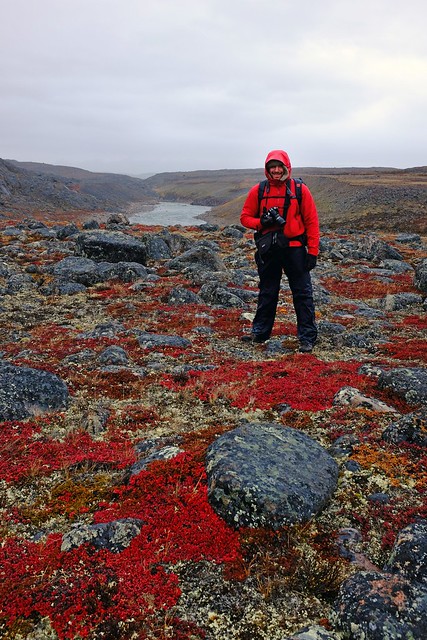
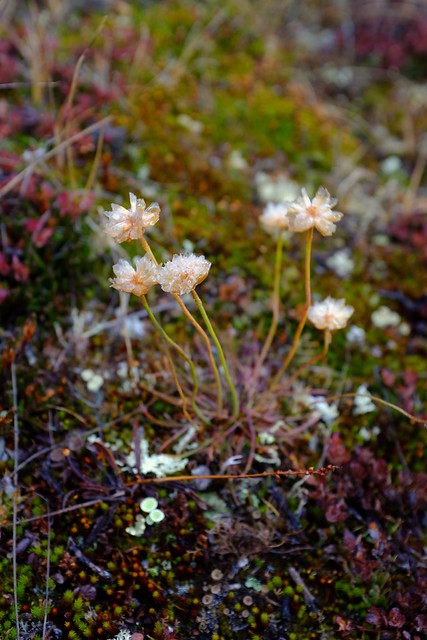

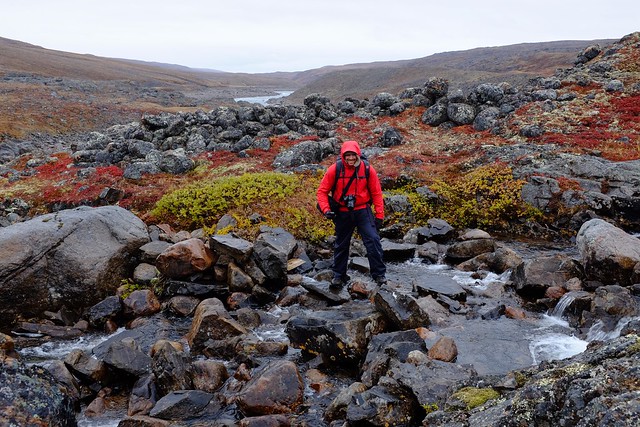
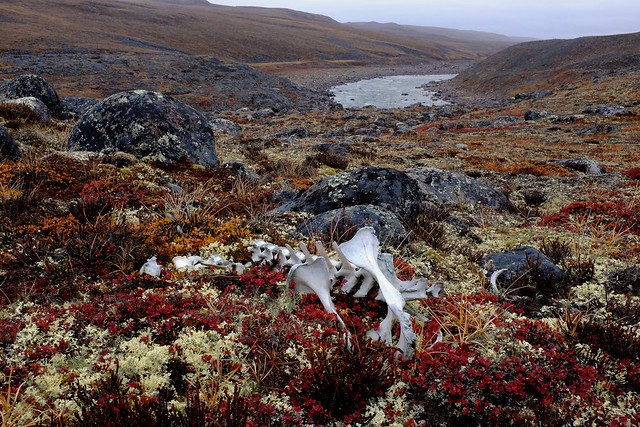
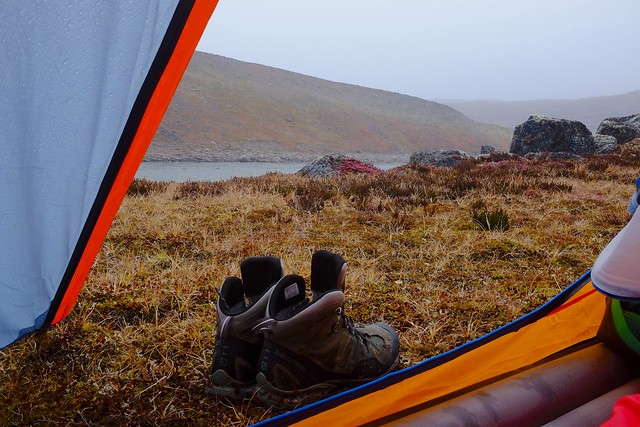

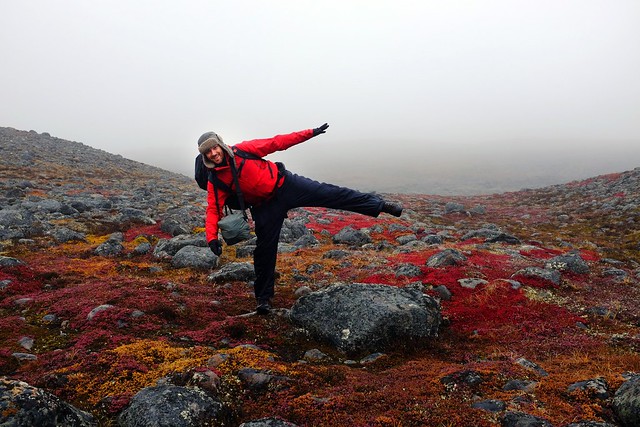
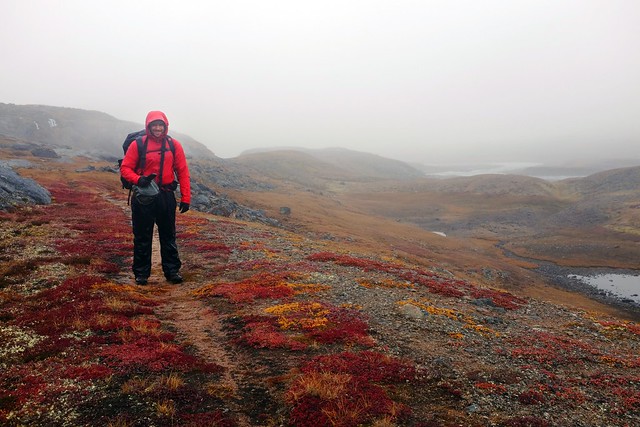
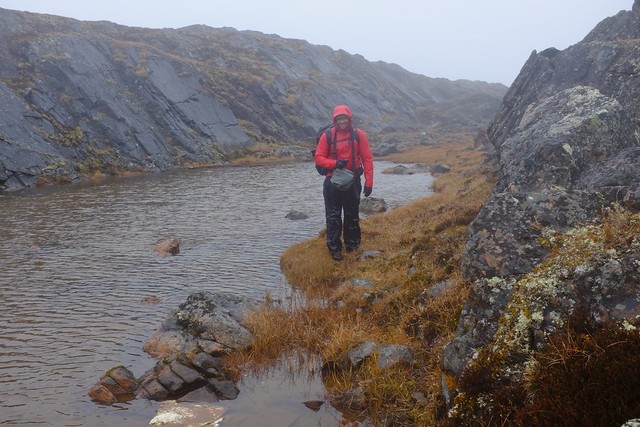
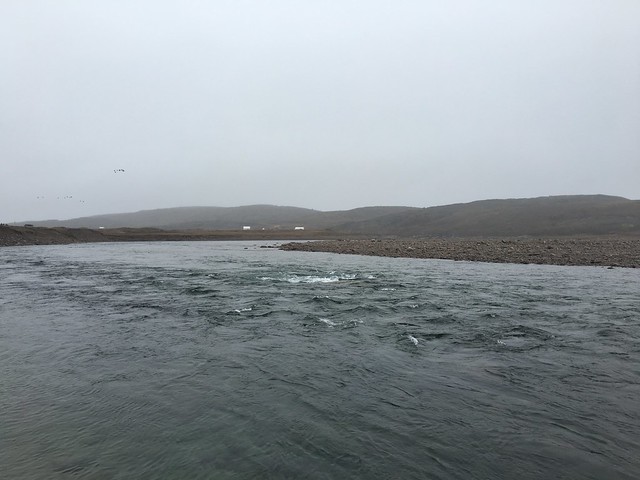

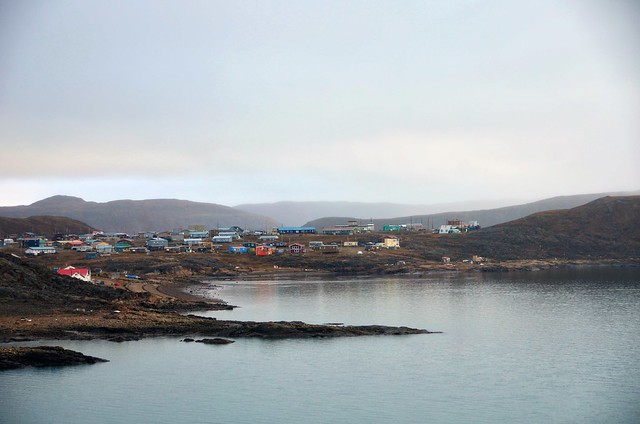

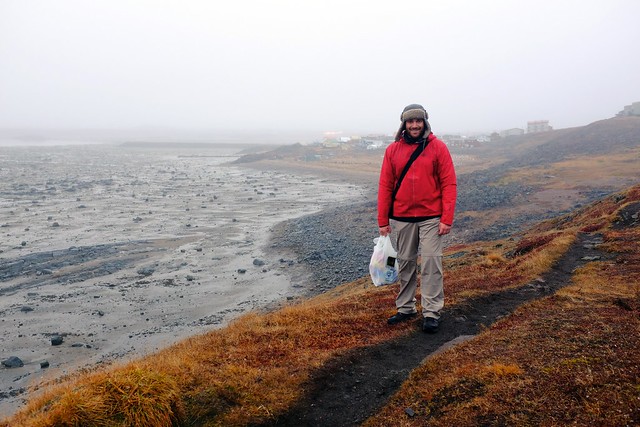
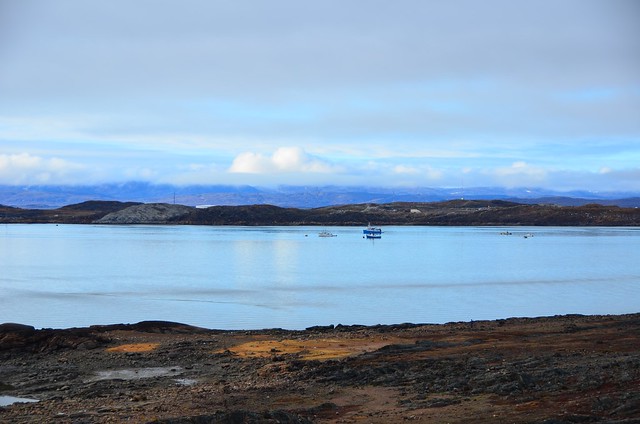
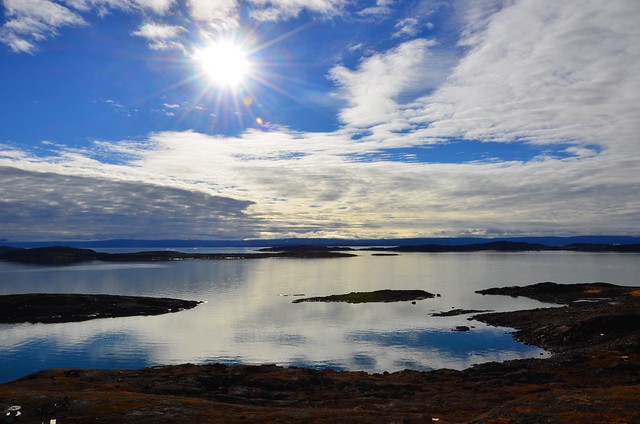

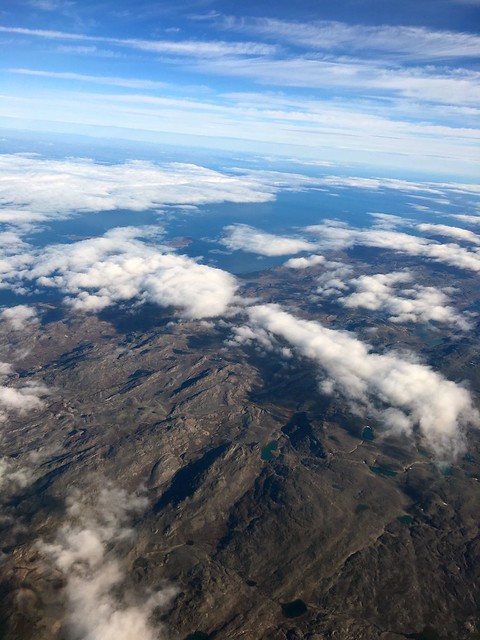
An incredible post and your final thoughts are a beautiful summary of the whole thing. Thank you.
What a wonderful blog! We are going to Iqaluit in July (just a short tour, no hiking. Thanks for sharing your story and the great pictures
Great read, thanks for sharing 🙂